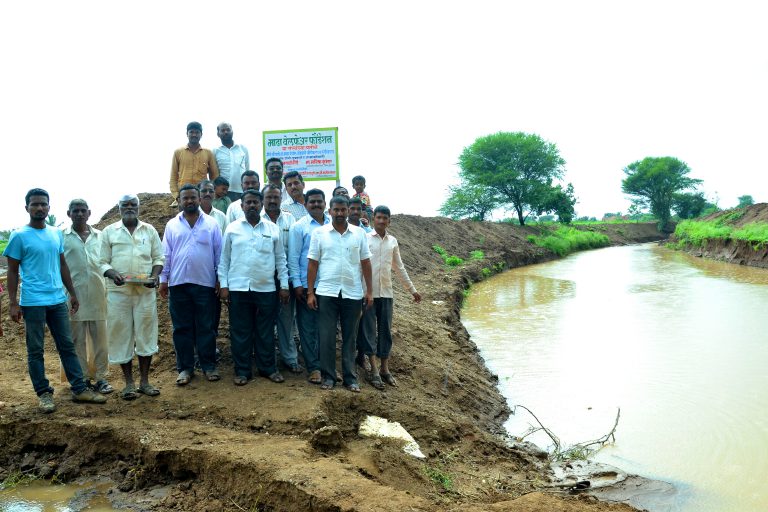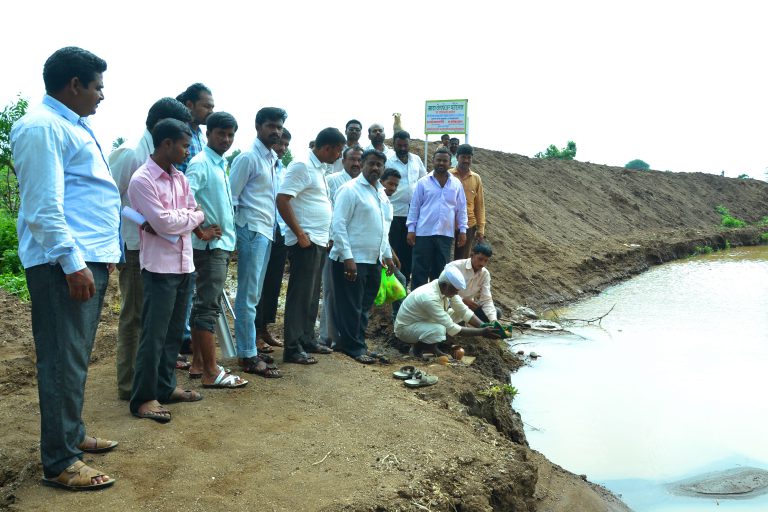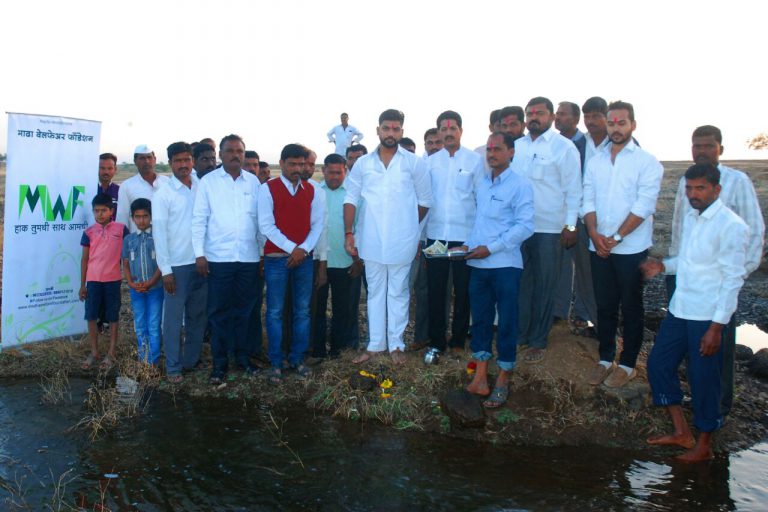Rejuvenation of Bend Nala
The Madha taluka is faced severe drought in 2013-14 and 2015-16. The water is limited and the laws of demand and supply made it the most expensive resource. Surface water has all but disappeared as rivers, canals, ponds and nalas have dried up. Ground water has been over exploited to the point that it doesn’t make any economic sense to dug bore wells. The Bend nala watershed having geographical area of approximate 20000 Ha and having length of the nala is 35500 mtrs which touches twelve villages. At present 47 small and big cement nala bandh are present on this nala which needs minor repairing and de-silting to improve water storage. The Madha Welfare Foundation is established in year 2015 has taken initiative for rejuvenating watersheds of the area. Till date as this watershed which will be benefited thousands of farmers. This work is taken up with following objectives-
1. Widening of Nala: The nala is running through twelve villages and in most of the areas illegal encroachment is done by farmers/villagers. Due to this encroachment the natural existence of nala has been threatened. To rejuvenate this nala to its original form the widening work should be prioritized by our organization. The actual width of nala is 20-40 meters which is encroached up to 10-15 meters. It is therefore decided by our organization. 2. Widening and deepening of 35 kms of Nala: At present 47 small and big cement barrages are present on this nala which needs minor repairing and de-silting to improve water storage. It will improve water storage capacity and also water table by proper percolation of the water. 3. Planting trees on both sides of the Nala: Most of the nala is illegally encroachment by the farmers. The farmers making agriculture by uprooting and cutting trees from the nala, which cause serious damage to its natural stream and causing soil erosion due to runoff water. Hence, buffer zone creation is most important on both sides of nala by planting trees like Wood apple, Jamun, Mango, Subhabhul, Teakwood and other horticultural crops could be done after the completion of earth work. Which is beneficial for soil conservation as well as improving water percolation of the area. 4. Repairing of the barrages for improving water storage: At present 47 barrages are spreading over the length of 35 Km of the Nala. Most of the barrages are badly damaged during the course of time, which cause water leakage and needs urgent repairing. 5. Clean and Safe drinking water supply: Clean drinking water is one of the basic human need. Wells, Dams and rain catchment system can provide a reliable source of drinking water. The necessity of clean and safe drinking water is highlighted by many of the authorities of health and rural development sector. Clean water availability is one of the major problem in draught prone area. By increasing ground water table of this area though above mentioned work could be easily overcome the problem of drinking water of these villagers/peoples. 6. Improve per ha productivity by making water availability during scarcity: Shortage of water leads to drought with obvious agricultural and societal impacts. Periods of repeated droughts have a particularly severe effect on societies, and there are many historical examples. Water is essential for crop production because plants require water for growth and tissue expansion. The critical stages of crop require protected irrigation for their survival and growth. If it is not possible to provide protected irrigation during these stages plants/crops may die and causes heavy losses. To overcome this problem of the draught prone area, it is essential to strengthen the water storage structures and improvement in ground water table. 7.Increase in per capita income through agriculture, dairy and horticultural crops: In this watershed the prevailing sources of income to the farmer are crop production, cattle raring and plantation of horticultural crops including vegetable production. Due to water shortage most of the famers depending on rainfed agriculture. By availing water in this area the farmer can adopt inter-cropping, intensive cropping, arid horticulture crops, milk production and dairy production. 8. Overall development of the locality: The watershed development programmes involving the entire community and natural resources influence productivity and production of crops, changes in land use and cropping pattern, adoption of modern technologies, increase in milk production, etc. attitude of the community towards project activities and their participation at different stages of the project, socio-economic conditions of the people such as income, employment, assets, health, education and energy use, impact on environment, use of land, water, human and livestock resources, development of institutions for implementation of watershed development activities and ensuring sustainability of improvements. It is thus clear that watershed development is a key to sustainable production of food, fodder, fuel wood and meaningfully addresses the social, economical and cultural status of the rural community.



